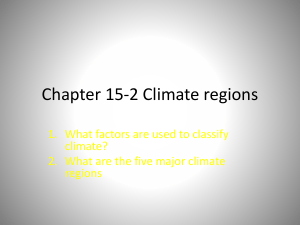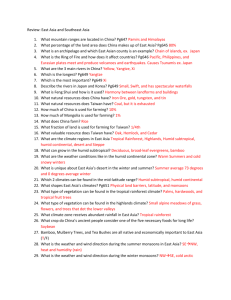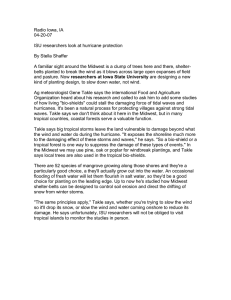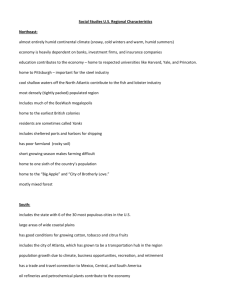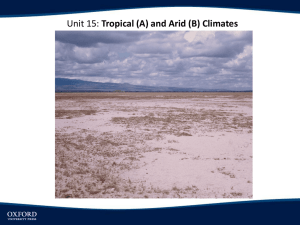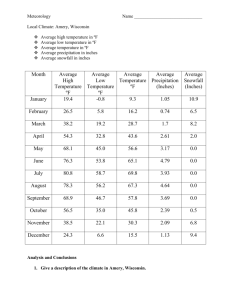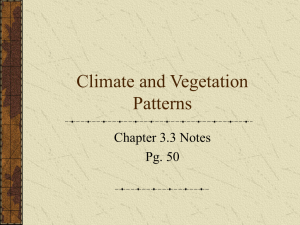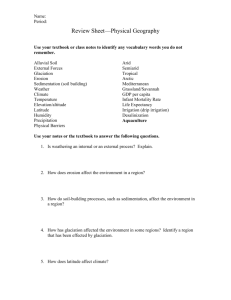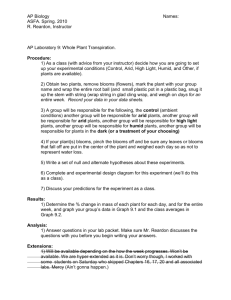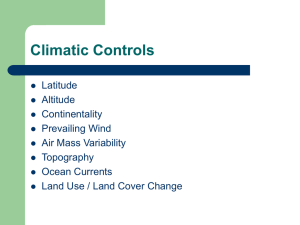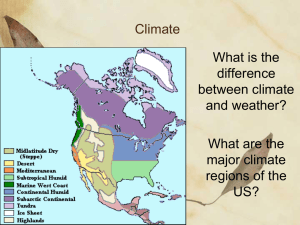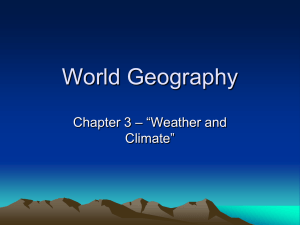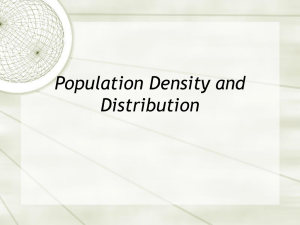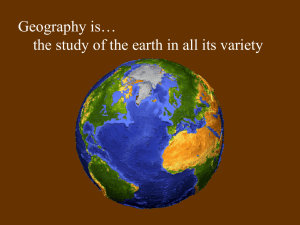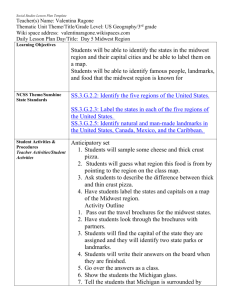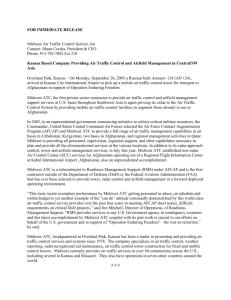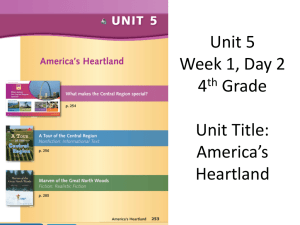File
advertisement
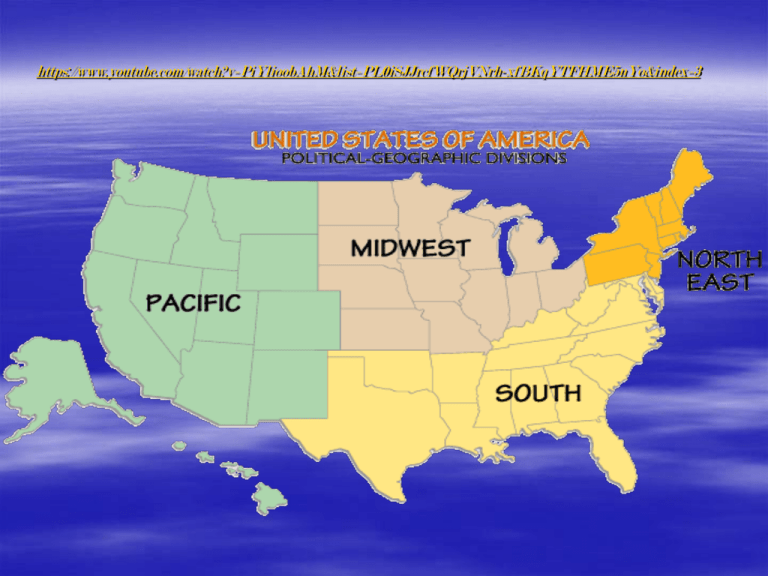
https://www.youtube.com/watch?v=PiYlioobAhM&list=PL0iSJJrcfWQrjVNrh-xfBKqYTFHME5nYo&index=3 The Northeast The most densely populated part of the U.S. Home to the BOSNYWASH megalopolis Diverse region of major cities: New York, Boston, Philadelphia. Large ethnic groups of Irish, Italians, Jews, Hispanics, Slavs. The Northeast Rocky coastline, good harbors, thin soil, low mountains, and deciduous forests. Humid continental climate/beautiful fall colors but cold winters. Great vacation spots from the historical sites of Boston and Philadelphia, to the hustle and bustle of Manhattan, or the summer resorts of Cape Cod and Martha’s Vineyard, or the coasts and harbors of Maine. Times Square Amish in the Fall Industry and the Future Traditionally an industrial region: textiles because of abundant rivers and hydroelectric power. Today the country’s economic center. Home of major universities such as Harvard, Yale, Princeton, Dartmouth, NYU & Columbia. Challenges: – Diversifying the economy, recovering the manufacturing base, costs of living issues, problems of urbanization. The Midwest The agricultural heartland of America. Rolling farmland, Great Plains, deciduous forests, abundant lakes and rivers. Humid continental climate/with bitterly cold winters in the upper Midwest. Kansas town and wheat fields Human Geography of the Midwest An ethnicity dominated by Germans, Scotch-Irish, English, Dutch, Scandinavians, Irish, Poles, Serbs, and African-Americans. Famous and large cities such as Chicago (3rd largest), Detroit, Cleveland, St. Louis, Indianapolis, and Minneapolis/St. Paul. Economy of the Midwest Corn belt: Iowa, Illinois, Indiana Wheat belt: Kansas, Nebraska, the Dakotas Dairy region: Wisconsin, Michigan, Ohio Beef cattle: Iowa specifically Automobile Industry – Detroit, Indianapolis Iron ore: Minnesota’s Mesabi Range World’s largest 1 day sporting event. Over 500,000 people watch it live! Challenges to the Midwest Re-vitalize the steel and automobile industries. Develop new tertiary sector jobs. – Banking, Corporate headquarters, High-tech Contend with climatic conditions such as tornadoes, drought, floods, and blizzards. The South The new South is now the most heavily populated region in the U.S. Fast growing region with modern urban centers such as: Houston, DFW, Atlanta, Miami, Orlando, Charlotte, Memphis, and technically Washington D.C. The South 2nd and 4th most populated states in Texas and Florida. Ethnically diverse region of British, African-American, Mexican, Cuban, French immigrants. Some of these communities are still regionally centered. The South A landscape of coastal plains, sandy and clay filled soil, pine, magnolia, oak, and cypress trees, and tropical zones. A humid subtropical climate of long hot humid summers and mild winters. Vacation spots such as Disney World, world famous beaches, French Quarter, historical battle sites from the Civil War, and the nation’s capital. The South’s Economy A traditional agricultural base of cotton, tobacco, rice, sugar, peanuts, peanuts, and raising of chickens. Now a diversified economy of manufacturing and growing service industries. Home of major corporations as diverse as Wal-Mart, Coca-Cola and Exxon Mobil. Why the Growth? The South overall as a region has 4 distinct advantages: –Cheaper land –Cheaper and abundant labor force –Less Union labor –Mild climate Economic Boom! Tourism Oil industry Space industry Newly re-located manufacturing The South’s challenges Immigration issues – Particularly Texas and Florida Rural poverty – Poorest states i.e. Mississippi Tropical storms – Hurricanes and tornadoes Education levels The West It is the most arid and sparsely populated region of the country. Despite large expanses of arid conditions, it also has very wet and tropical zones. Mountainous terrain and large protected areas as reserves and national parks. Most diverse climatic region: Arid, Tropical, Mediterranean, Maritime, Subarctic. Demographics of the West A diverse region of people, many as original adventurous settlers from the East. Native Americans (still numerous), Hispanic, Asian, British stock. Largest U.S. state in population, California at 36 million! Fastest growing states: Arizona & Nevada Major Urban Centers Los Angeles (2nd largest), San Diego, San Francisco, Seattle, Denver, Phoenix, Las Vegas, Portland A Diversified Economy A region that saw traditional growth due to mining, ranching, and timber. – Coal (Wyoming) biggest U.S. producer today – Copper (Arizona) – Silver (Nevada) Farming of fruits, vegetables, and vineyards has led to a profitable agricultural industry. – California and Washington particularly Home to the U.S. computer hearth. (From Silicon Valley to Seattle.) Home of Hollywood and the entertainment industry. Tourism is big business! Beautiful Hawaii! Amazing Alaska! Sea otters Surfacing (breeching) orca Challenges and Concerns Human issues include: – Immigration, population growth in specific areas, urbanization Natural issues include: – water scarcity, earthquakes, volcanoes, el nino, grass and forest fires, mudslides, tropical storms

